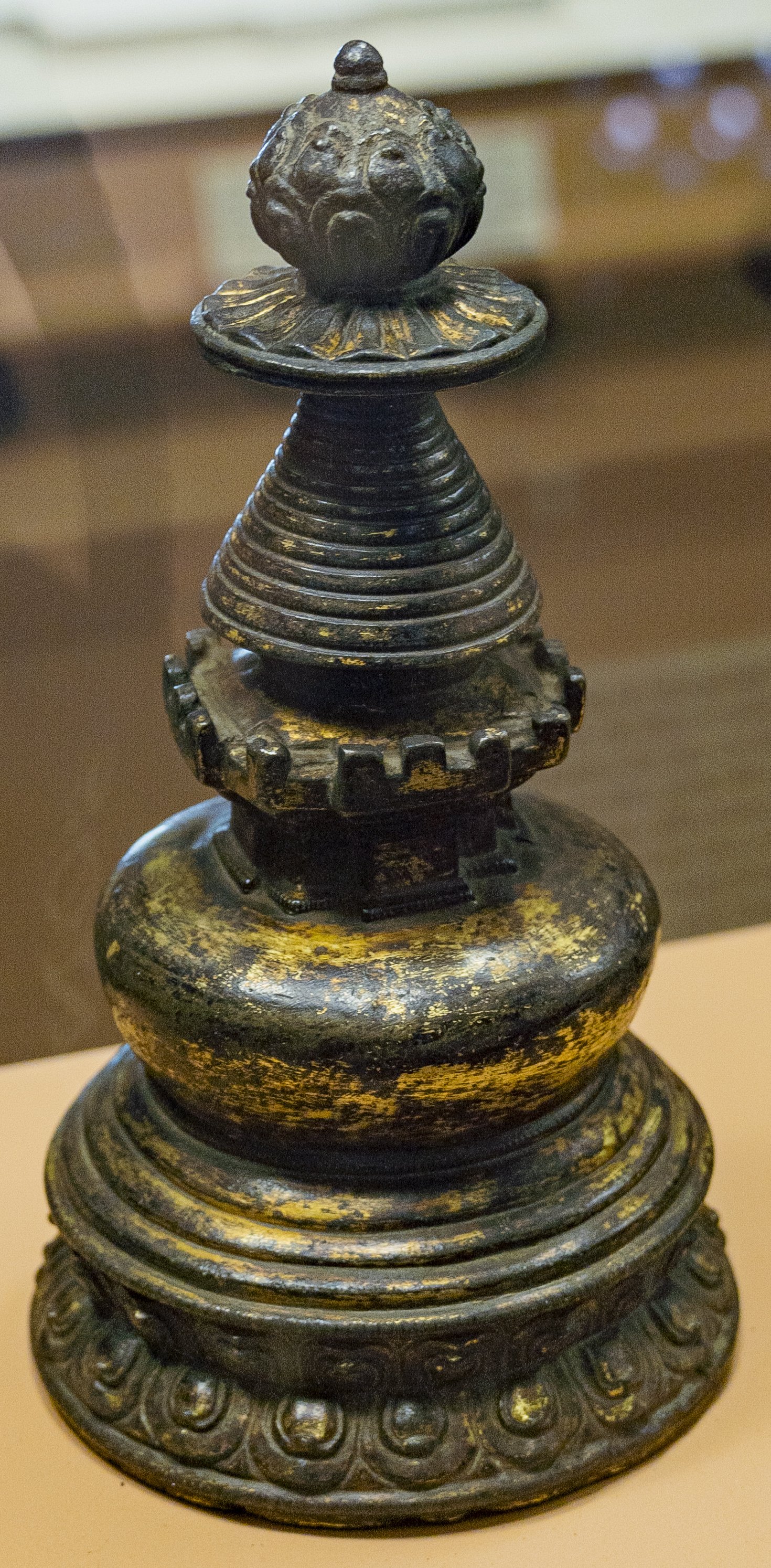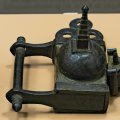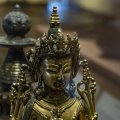Patan Museum (Nepal): photo 139
Photo 139 of 212 in Gallery: Patan Museum (Nepal)

Image title: Namgyal Chorten (Tibet, 14th century)
Description of the photo
This Copper sculpture shows an image of Namgyal Chorten/Chörten (or Vijaya Stupa), from the 14th/15th century origination from Tibet.—Materials used: Copper alloy, gilt.
Description: This is one of the eight special forms of chaityas Tibetan Buddhists have devised to commemorate significant events in the life of the Buddha, of which four are represented in this case (2, 4, 7, 8). The Namgyal Chörten/Chorten is characterized by three circular, stepped mouldings below the dome and commemorates the Miracle at Vaishali. In this example the mouldings and dome are supported by a double lotus. Above the dome is a crenelated, eight-angled structure upon which rises a thirteen-ring finial. The latter is surmounted by a lotiform disc (amalaka) topped with a lotus bud from which projects the tip of the imaginary central pillar.
Notes: This image is number (2) in the series: The Chaitya: All-Pervasive Monument of Buddhism—An architectural monument unique to Buddhism, the stupa, chaitya, or (in Tibetan) Chörten, is a dominant feature throughout the Buddhist world, past and present. It exists in countless Silk Road ruins and the mounds of southern Nepal, as famous archaeological monuments like India’s Sanchi or Java’s awesome Borobudur, in Burma's or Thailand's actively worshiped myriads, or Nepal's imposing Bodhnath [Boudhanath] and Svayambhu. Chaityas are sometimes minor votive structures, two to four meters high. In Nepal such chaityas crowd the sacred precincts of Svayambhu, embroider the plinths of large stupas like Kathmandu’s Kathesimbhu, embellish monastery and domestic courtyards, sanctify ancient sunken fountains, and dot the waysides. Miniature chaityas a tenth the size of votive chaityas are carried as personal icons (7) or placed in household or monastery shrines (2, 4, 5, 6, 8). The chaitya is also an all-pervasive sacred emblem. It adorns the mystic crown of the Buddhist priest. It serves as a primary attribute or associate of gods and goddesses such as Maitreya (1) and Ushnisha-vijaya (9). It is the subject of countless Nepalese paintings, and appears carved as tiny motifs on the votive chaityas themselves. It is annually created in clay by the disposable thousands, and carved into the lintels of monastery portals to bless all who enter.
Gallery information:
The Patan Museum is located on the Durbar square of Patan (Lalitpur/Lalitapura, Kathmandu, Nepal) which is associated Keshav Narayan Chowk (Keshavnarayan)—a form of Lord Vishnu. Being listed as a World Heritage Site, the whole of Durbar square is filled with exquisite temples, sculptures and other ancient structures, of which the ancient history history can be traced to the Malla Kings of Lalitpur. It is an important site for both Buddhism and Hinduism.
Photo details:
Date: 2019-12-02
Camera: SONY ILCE-6400
Exposure: 1/25
Aperture: f/4.5
ISO: 100
Focal length: 30mm
High resolution:
Download file
Size: 2.42 MB
Resolution: 1470 x 2988
© Photograph by Gabe Hiemstra.
License: CC BY-NC-ND 4.0

